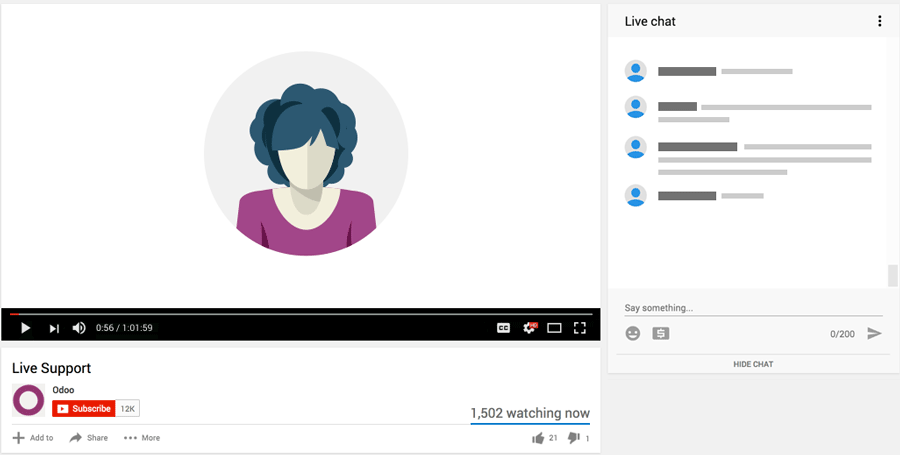Work In Progress represents the financial outlay (raw materials,
labor, equipment/overhead costs) and “cost to date” of unfinished goods.
The terms "work-in-progress" and "finished
goods" differ from company to company. Finished goods for one company (sheet
plywood from a lumber mill) may be considered a raw material for another
company (a cabinet maker).
It is not necessary to measure anything you won’t use in
your decision-making process. So before
investing in configuring Odoo to measure WIP, you should make sure you will regularly
monitor WIP and make decisions after measuring it.
Finance – Odoo books all transactions having an impact on
the General Ledger in real-time, including those in the warehouse and/or the
production floor, so if your team discusses needing to accrue and report WIP,
this is done automatically.
Project Management – If your company manufactures to order,
WIP is a way of measuring how much inventory and labor and overhead (money) a
particular order is “using”. Any asset a
company has should be used as effectively as possible. Cash flow is commonly
affected by how long it takes an order to be completed (because when it is
finished, you can ask your customer to pay for it). If you work on too many orders at once, more
of your capital might be tied up. Since you
can’t charge your customers until you finish, you might run out of money!
Profitability Margins – if you don’t measure WIP, you need
to use other methods to understand the true cost of items you make. You can allocate your non-administrative
labor and overhead from time to time but measuring WIP can give you a more
real-time measurement. You don’t want to
find out at the end of the month that everything you made (and probably already
sold) lost you money.
Raw materials and direct labor are quite easy to
understand. The third component to WIP,
overhead, can consist of things like:
indirect labor (such as security and cleaning personnel);
indirect materials (glues, tapes, repair parts, etc);
utilities (rent, water, gas, electricity, etc);
maintenance (machine repairs, tune ups, etc);
quality (inspections, rework, testing, etc);
downtime (machines or people waiting); and
depreciation (on equipment and machines).
Overhead can sometimes be the largest "hidden" component of your product cost.
In a Restaurant for example, the cost of making a meal can
work out to look like:
|
Direct Costs – 50%
|
Overhead Costs – 35%
|
|
30% food
|
7% prep, managers, cleaning staff, greeters, etc.
|
|
20% kitchen cooking/wait staff.
|
3% menus, napkins, cutlery, cups, etc.
|
|
|
18% electricity, gas, rent
|
|
|
2% maintenance and quality
|
|
|
1% downtime
|
|
|
4% depreciation of furniture, technology, ovens, etc.
|
Without looking at all of these costs, you might think that with
a food cost of 30% and a labor cost of 15% that the restaurant makes a profit margin
/ net profit of 50%. Once you add in the
overhead items the profit margin drops to 15%.
Quite a difference!
You don’t have to measure WIP to calculate a true profit
margin. You can, from time to time,
review the overhead costs (like at the end of the month) and allocate them back
into the cost of manufacturing based on product or quantity or other methods –
so that your cost of goods (when you sell something) can be accurately estimated.
Note that due to the fact you might sell Inventory during
the month, you need to evaluate if this is a good enough method for you.
If you have a quicker turnaround for inventory, it might be
better to set up manufacturing to manage WIP for you and to include overhead on
your Bills of Materials, and even integrate Manufacturing with Timesheets.

